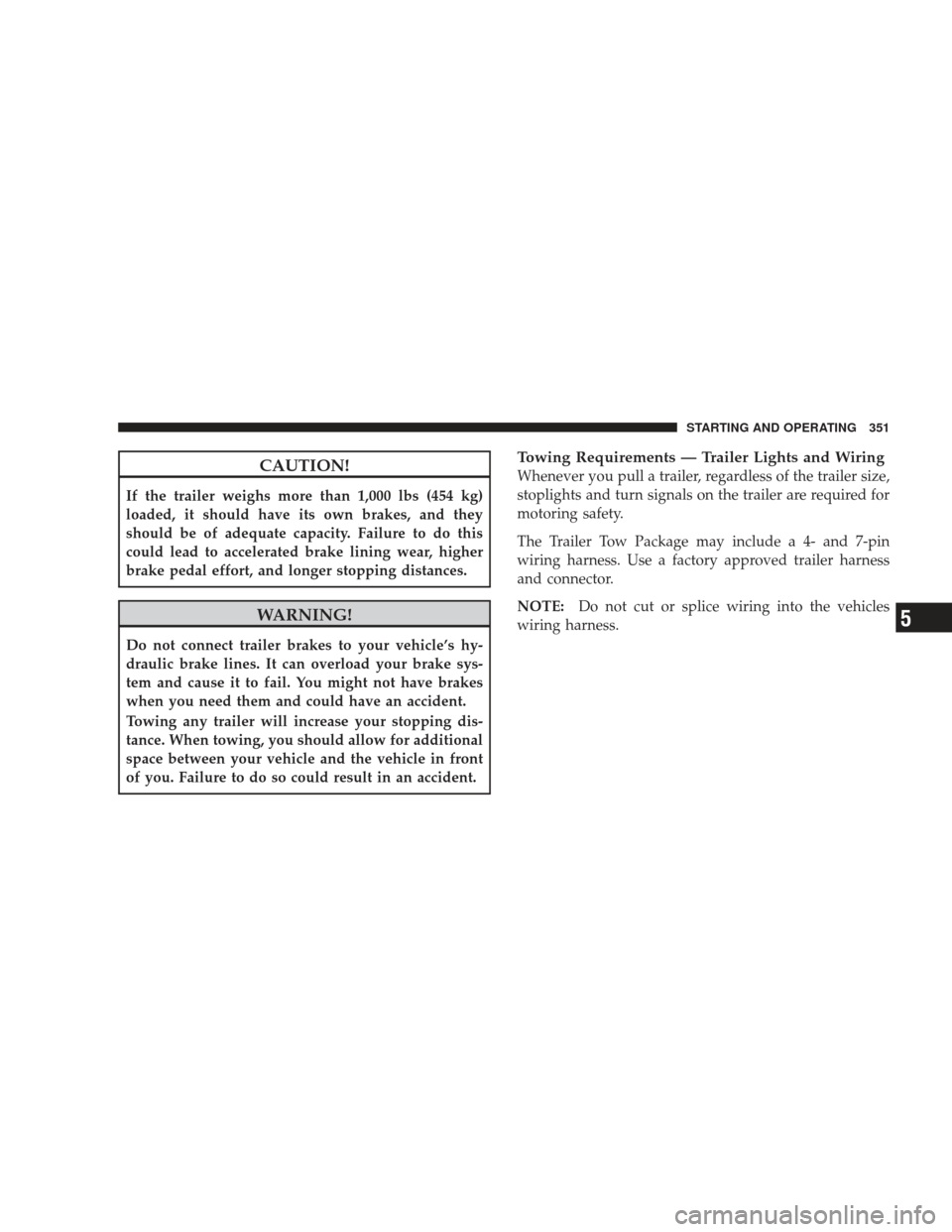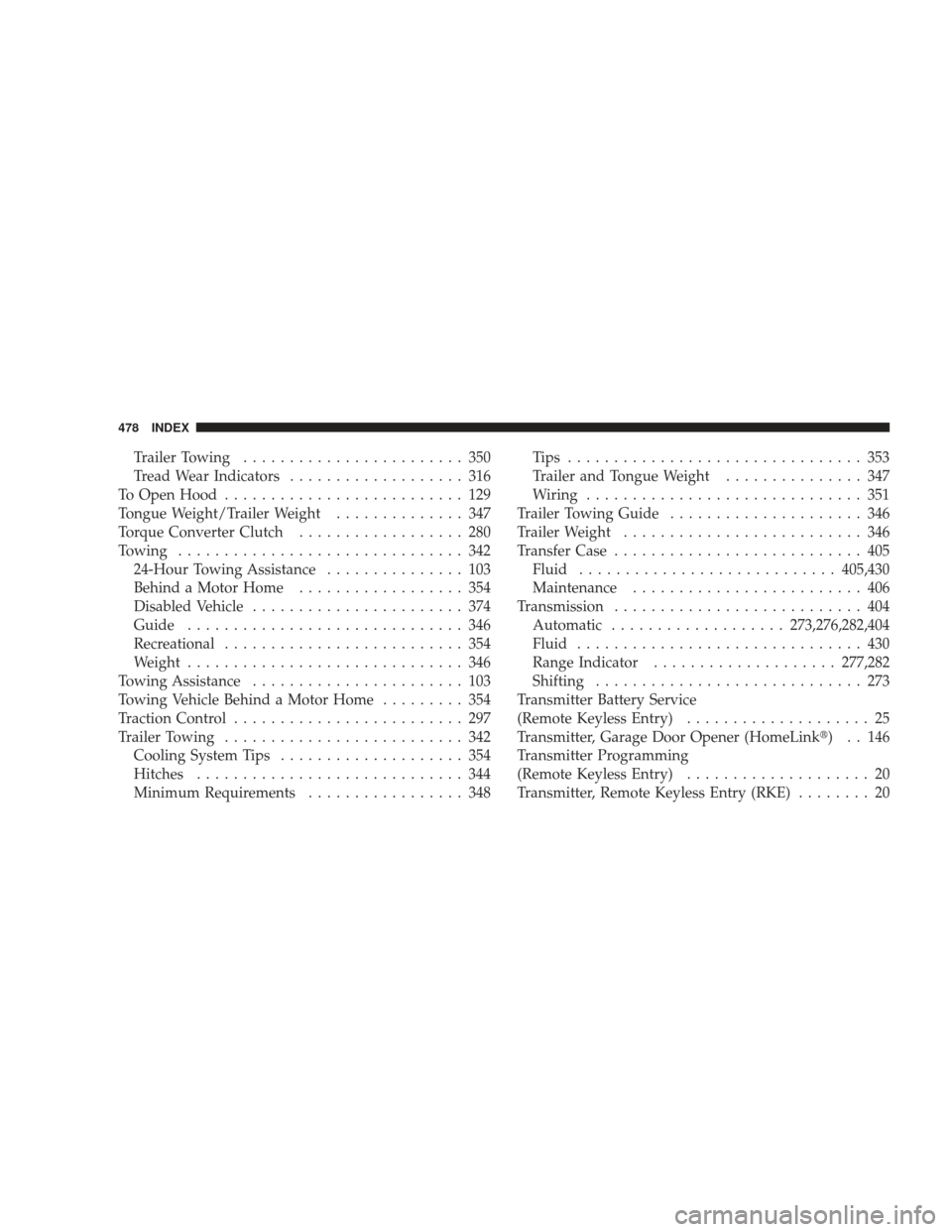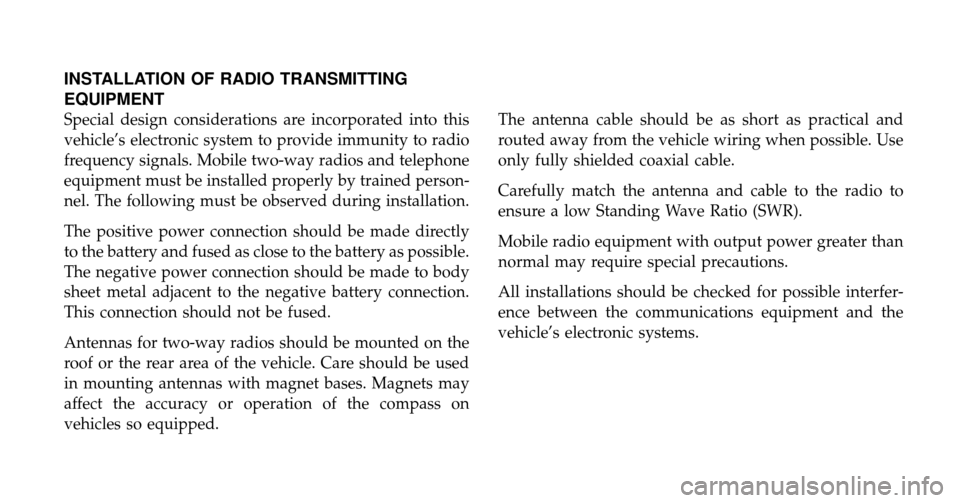Page 60 of 484

WARNING!
•Relying on the airbags alone could lead to more
severe injuries in a collision. The airbags work
with your seat belt to restrain you properly. In
some collisions, the airbags won’t deploy at all.
Always wear your seat belts even though you have
airbags.
•Being too close to the steering wheel or instrument
panel during airbag deployment could cause seri-
ous injury. Airbags need room to inflate. Sit back,
comfortably extending your arms to reach the
steering wheel or instrument panel.
•If the vehicle has supplemental side curtain air-
bags and/or supplemental front seat-mounted side
airbags, they also need room to inflate. Do not lean
against the door or window. Sit upright in the
center of the seat.
Airbag System Components
The airbag system consists of the following:
•Occupant Restraint Controller (ORC)
•Side Remote Acceleration Sensors (if equipped)
•Airbag Warning Light
•Driver Airbag
•Front Passenger Airbag
•Supplemental Side Curtain Airbags above Side Win-
dows (if equipped)
•Supplemental Front Seat-Mounted Side Airbags (if
equipped)
•Steering Wheel and Column
•Instrument Panel
•Interconnecting Wiring
58 THINGS TO KNOW BEFORE STARTING YOUR VEHICLE
Page 66 of 484

•Unlocks the doors automatically.
NOTE: The interior lights can only be deactivated if the
key is removed from the ignition switch or the vehicle is
driven.
Maintaining Your Airbag System
WARNING!
•Modifications to any part of the airbag system
could cause it to fail when you need it. You could
be injured because the airbags are not there to
protect you. Do not modify the components or
wiring, including adding any kind of badges or
stickers to the steering wheel hub trim cover or the
upper passenger side of the instrument panel. Do
not modify the front bumper, vehicle body struc-
ture, or frame.
(Continued)
WARNING! (Continued)
•You need proper knee impact protection in a
collision. Do not mount or locate any aftermarket
equipment on or behind the knee impact bolster.
•It is dangerous to try to repair any part of the
airbag system yourself. Be sure to tell anyone who
works on your vehicle that it has airbags.
NOTE:
Perchlorate Material — special handling may ap-
ply. See www.dtsc.ca.gov/hazardouswaste/perchlorate.
64 THINGS TO KNOW BEFORE STARTING YOUR VEHICLE
Page 353 of 484

CAUTION!
If the trailer weighs more than 1,000 lbs (454 kg)
loaded, it should have its own brakes, and they
should be of adequate capacity. Failure to do this
could lead to accelerated brake lining wear, higher
brake pedal effort, and longer stopping distances.
WARNING!
Do not connect trailer brakes to your vehicle’s hy-
draulic brake lines. It can overload your brake sys-
tem and cause it to fail. You might not have brakes
when you need them and could have an accident.
Towing any trailer will increase your stopping dis-
tance. When towing, you should allow for additional
space between your vehicle and the vehicle in front
of you. Failure to do so could result in an accident.
Towing Requirements — Trailer Lights and Wiring
Whenever you pull a trailer, regardless of the trailer size,
stoplights and turn signals on the trailer are required for
motoring safety.
The Trailer Tow Package may include a 4- and 7-pin
wiring harness. Use a factory approved trailer harness
and connector.
NOTE:Do not cut or splice wiring into the vehicles
wiring harness.
STARTING AND OPERATING 351
5
Page 480 of 484

Trailer Towing........................ 350
Tread Wear Indicators ................... 316
To Open Hood .......................... 129
Tongue Weight/Trailer Weight .............. 347
Torque Converter Clutch .................. 280
Towing ............................... 342
24-Hour Towing Assistance ............... 103
Behind a Motor Home .................. 354
Disabled Vehicle ....................... 374
Guide .............................. 346
Recreational .......................... 354
Weight .............................. 346
Towing Assistance ....................... 103
Towing Vehicle Behind a Motor Home ......... 354
Traction Control ......................... 297
Trailer Towing .......................... 342
Cooling System Tips .................... 354
Hitches ............................. 344
Minimum Requirements ................. 348 Tips ................................ 353
Trailer and Tongue Weight
............... 347
Wiring .............................. 351
Trailer Towing Guide ..................... 346
Trailer Weight .......................... 346
Transfer Case ........................... 405
Fluid ............................ 405,430
Maintenance ......................... 406
Transmission ........................... 404
Automatic ................... 273,276,282,404
Fluid ............................... 430
Range Indicator .................... 277,282
Shifting ............................. 273
Transmitter Battery Service
(Remote Keyless Entry) .................... 25
Transmitter, Garage Door Opener (HomeLink�) . . 146
Transmitter Programming
(Remote Keyless Entry) .................... 20
Transmitter, Remote Keyless Entry (RKE) ........ 20
478 INDEX
Page 483 of 484

INSTALLATION OF RADIO TRANSMITTING
EQUIPMENT
Special design considerations are incorporated into this
vehicle’s electronic system to provide immunity to radio
frequency signals. Mobile two-way radios and telephone
equipment must be installed properly by trained person-
nel. The following must be observed during installation.
The positive power connection should be made directly
to the battery and fused as close to the battery as possible.
The negative power connection should be made to body
sheet metal adjacent to the negative battery connection.
This connection should not be fused.
Antennas for two-way radios should be mounted on the
roof or the rear area of the vehicle. Care should be used
in mounting antennas with magnet bases. Magnets may
affect the accuracy or operation of the compass on
vehicles so equipped.The antenna cable should be as short as practical and
routed away from the vehicle wiring when possible. Use
only fully shielded coaxial cable.
Carefully match the antenna and cable to the radio to
ensure a low Standing Wave Ratio (SWR).
Mobile radio equipment with output power greater than
normal may require special precautions.
All installations should be checked for possible interfer-
ence between the communications equipment and the
vehicle’s electronic systems.